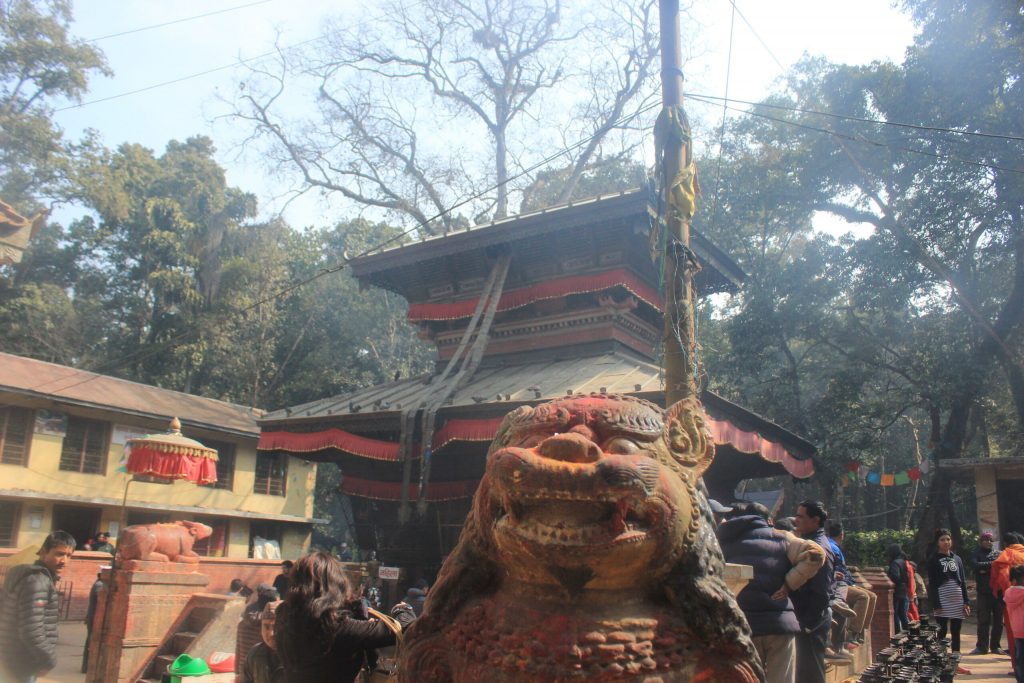The story of Bajra Barahi temple dates to the 16th century. The temple is one of the four Barahi temples in Kathmandu, Nepal and is located only few kilometres from Kathmandu city in Lalitpur. Goddess Bajra Barahi is believed to be the guardian deity of the valley.
King Shree Niwas Malla from Patan once had a dream. It was in 1666 A.D. He dreamt that Goddess Bajra Barahi, an incarnation of Goddess Kali, has asked him to build a temple in the nearby forest. But the challenge for the King was that he had to build it in a day. Hurriedly, on King’s order, his men started to construct the temple. It was artfully constructed following the pagoda style architecture. But it didn’t have the pinnacle. Its interesting to know when the King’s workers were constructing the temple and was about to place the pinnacle when the rooks cawed. The workers thought it was the dawn of a new day. And therefore, didn’t place the pinnacle and obeyed to the belief that the temple construction should be completed before the dawn of a new day. The temple till today stands without the pinnacle.
Even at present time, people believe that if anyone tries to place the pinnacle on the temple, misfortune will dawn on the individual or the valley. The location of the temple also entails the surrounding forest with religious values for the locals. Considered to be sacred, locals don’t believe in taking out even a leaf from the forest. Locals believe that even if a leaf is taken out of the forest unintentionally, then it mysteriously comes back. However, if taken intentionally, bad luck awaits to happen. There are only three minor communities who can use the forest resources. They are the temple priest and his family, and the two castes – Pode and Putuwar, living in the area.
The story of Bajra Bahari temple has been told and retold many times by the locals. However, since the history and the story of this temple and forest has been orally transmitted through generations, there are many legends and beliefs attributed to it.
Considered to be sacred, locals don’t believe in taking out even a leaf from the forest. Locals believe that even if a leaf is taken out of the forest unintentionally, then it mysteriously comes back.
My understanding of the belief and history behind this religious forest and the temple developed after a series of conversation. I spoke with the locals visiting the temple. I also spoke with Udit Bhatta, Director of Vajra Academy, the first green school of Nepal, located near the forest. And as expected from any age old oral narrative, I got to hear a slightly different version from all the narrators.
Nonetheless, the temple now stands inside a lush green thick deciduous forest encompassing approximately 19 hectares. This religious forest is maintained by a committee named Jyotidaya Sangh with support from the local communities. The forest is haven for many wildlife species including a rich avian population, and plants with high medicinal value. It is also home to the ‘spiny blabber’, a specie of blabbers only found in Nepal.
However, the sight of the landscape outside the forest patch is not very appealing. One could see the visible distinction between the thick forest of Bajra Barai and the adjacent hill where massive construction was being undertaken.
